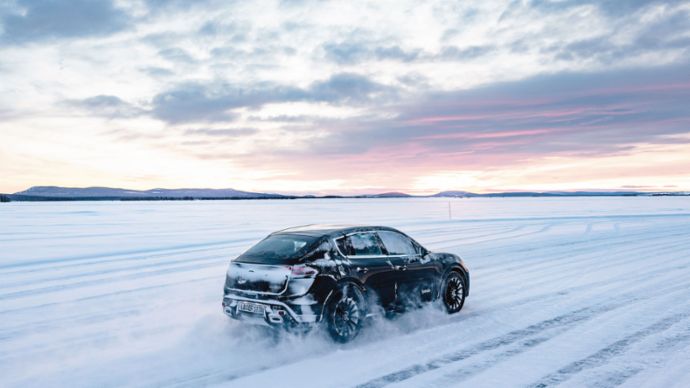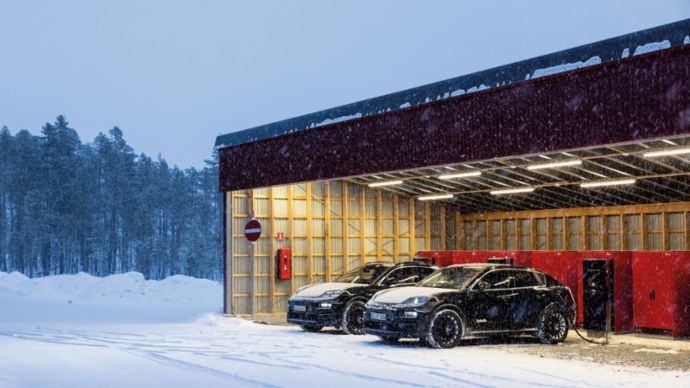Charged with Anticipation
Porsche unveiled the new Macan as its first all-electric SUV. The world premiere was preceded by millions of test kilometers and meticulous modification of the vehicle tuning, aerodynamics, and drive. The result: a sports car that combines yet more comfort with the characteristic Porsche performance.
“The Macan has always been the sportiest model in its segment, and that is to continue to be the case,” clarifies Jörg Kerner, Vice President Product Line Macan, from the outset. He then proudly adds: “I’m not aware of a more comfortable vehicle that additionally offers so much performance, handling, and stability.” The first all-electric SUV from Porsche in the Macan 4 and Macan Turbo model versions initially unveiled is to set new benchmarks and continue the success story of its gasoline-powered predecessor. Porsche was presented with an entirely new challenge while developing the next Macan generation: the drive concept of an existing product line was completely overhauled for the first time. A bold step considering the Macan has been one of the top-selling models in the entire Porsche portfolio since it first appeared 10 years ago.
More than 3.5 million test kilometers under extreme conditions
The new vehicle is instantly recognizable as a Macan, and yet nothing has stayed the same. “Not a single part was taken over from the predecessor,” says Kerner, laughing. “Not even the emblem.” This was reworked for the entire brand by the Porsche designers in the anniversary year, 2023.
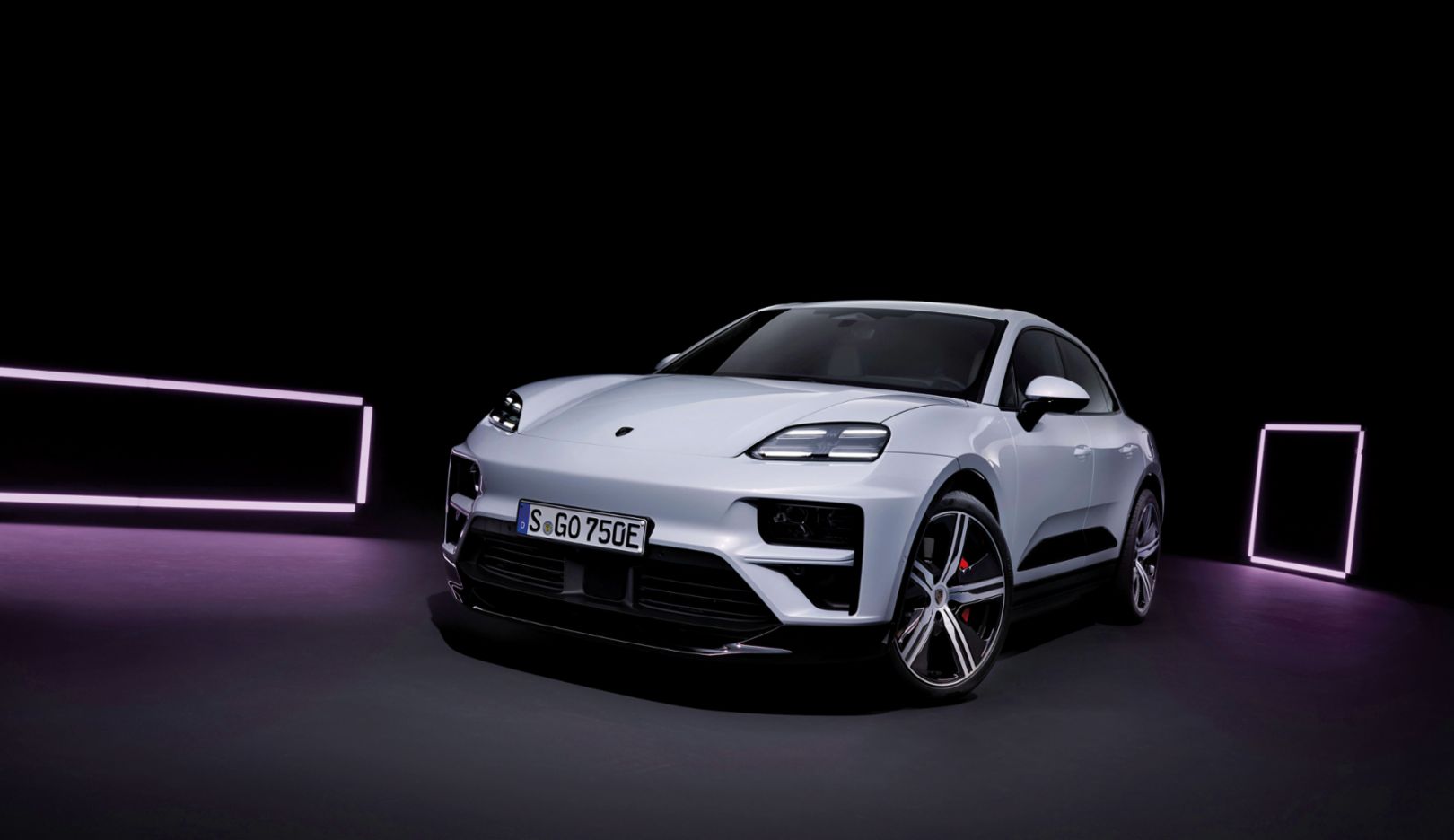
It is not only within the company that there are great expectations concerning the latest development of the successful model. This is the second all-electric product line to be rolled out, following the Taycan – a clear signal that Porsche is focusing fully on the future of electric mobility. Its declared goal is for more than 80 percent of all new vehicles to have an all-electric drive in 2030.
The new Macan is another milestone on the way to this being achieved. It is produced at the Porsche factory in Leipzig, on a production line together with combustion engine and hybrid vehicles. The engineers therefore had to do a great deal of development and testing work. They racked up more than 3.5 million test kilometers on test tracks and public roads around the world in the camouflaged prototype. “We covered the entire range of temperatures, from minus 22 degrees Fahrenheit in Scandinavia to 122 degrees Fahrenheit in Death Valley in California,” reports Jörg Kerner. Attention was paid in particular to drive-specific factors like battery thermal management and the charging infrastructure in the various countries. “There are some big differences here,” says Kerner, “and we obviously have to create the optimum technical conditions for the charging standards in all of our markets. No matter what charging standards apply – it should be as quick and easy as possible for our customers.”
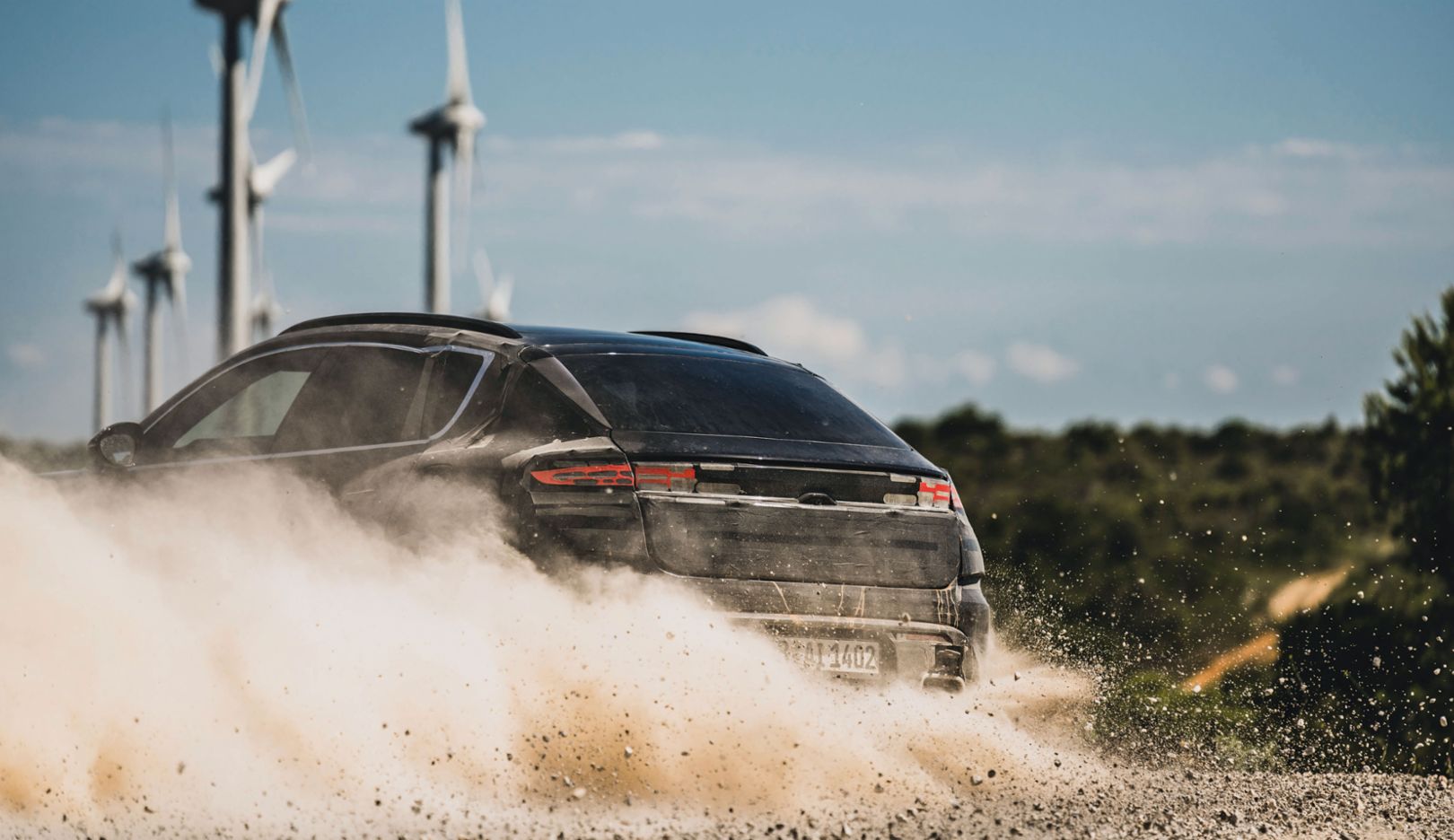
Extreme conditions:
The developers racked up 3.5 million test kilometers in the prototypes in all the climate zones around the world.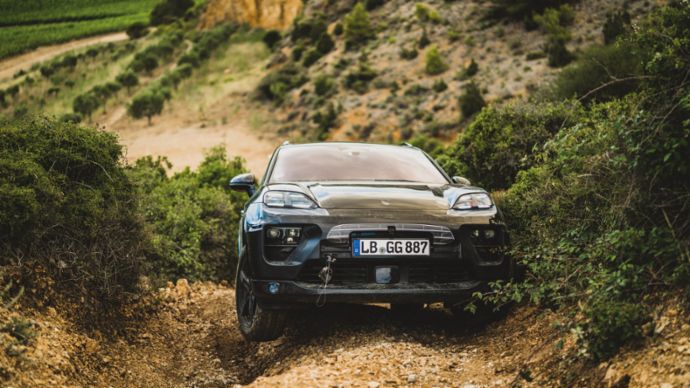
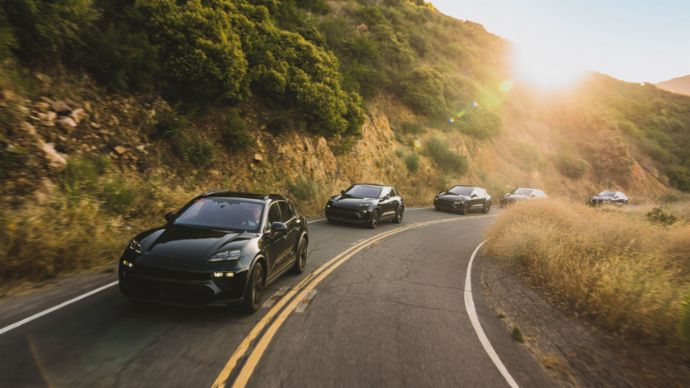
Dynamic like a sports car
Much the same can be said for the driving characteristics. “Porsche stands for driving dynamics and precision,” says Kerner. “These are in our DNA.” With an SUV, there is additionally the fact that this premise applies to virtually every surface and usage. The prototypes were therefore tested not only on roads and racetracks, but also off-road on gravel, snow, and ice. Decades of experience with conventionally powered vehicles helped the engineers to test the boundaries of all-electric vehicles more quickly. “In off-road testing, we were pleasantly surprised at how precisely the power at the drive wheels could be managed,” says Kerner. Design-related advantages of the electric drive allow for fine control. “We can apply the power directly to any of the four wheels without a Cardan shaft, coupling, or intermediary transmission.”
And there’s plenty of power. Porsche opted for the latest generation of permanently excited synchronous motors, with one each on both the front and rear axle. Together, these generate overboost power of up to 470 kW (639 PS; Macan Turbo Electric: Electric power consumption* combined (WLTP) 20.7 – 18.4 kWh/100 km, CO₂ emissions* combined (WLTP) 0 g/km, CO₂ class A ), and, in the Macan 4, 300 kW (408 PS; Macan 4 Electric: Electric power consumption* combined (WLTP) 20.5 – 17.8 kWh/100 km, CO₂ emissions* combined (WLTP) 0 g/km, CO₂ class A ). The electric motors draw their energy from a lithium-ion battery in the underbody, with up to 95 kWh of its gross capacity of 100 kWh being used. The top model can achieve torque of up to 1,130 Nm – impressive potential which is managed almost in real time by the electronically controlled Porsche Traction Management. “In terms of acceleration, we are achieving dimensions that were exclusive to a 911 Turbo just a few years ago,” Kerner raves.
“Driving dynamics and precision are in our DNA.”
Jörg Kerner

Evolution:
Jörg Kerner, Vice President Product Line Macan, explains why the first all-electric SUV is a true Porsche.Performance rear for sportiness and dynamism
The all-electric Macan is based on the Premium Platform Electric (PPE) developed together with Audi. Porsche created the innovative performance rear especially for the Macan Turbo. “The key thing here is that we rotated the electric motor in the tail through 180 degrees around the transaxle, which enabled us to move a lot of parts further back,” explains Jörg Kerner. This not only allows for more rear-focused weight distribution as is typical for a sports car, on a ratio of 48 percent at the front to 52 percent at the rear “for even sportier and more dynamic driving than in its predecessor.” It also creates the space needed between the battery and the drive for the optional rear-axle steering.
This offers a number of advantages: at speeds of up to approximately 80 kmh, the rear and the front wheels steer in the opposite directions. This reduces the turning circle by one meter down to around just eleven meters, making maneuvering significantly easier. With the wheelbase virtually being shortened by the co-steering rear axle, the vehicle’s steering behavior on corners is additionally even more dynamic. At speeds above approximately 80 kmh meanwhile, the rear wheels steer in the same direction as the front axle, resulting in a virtual extension of the wheelbase and therefore further enhanced driving stability. “With rear-axle steering, we resolved the old trade-off between agility in urban traffic and driving precision at higher speeds,” explains Kerner. It’s an innovation which is likely to delight more than just the experienced developer: “I’m simply amazed at how quickly and precisely this relatively large vehicle can be maneuvered around the racetrack.”
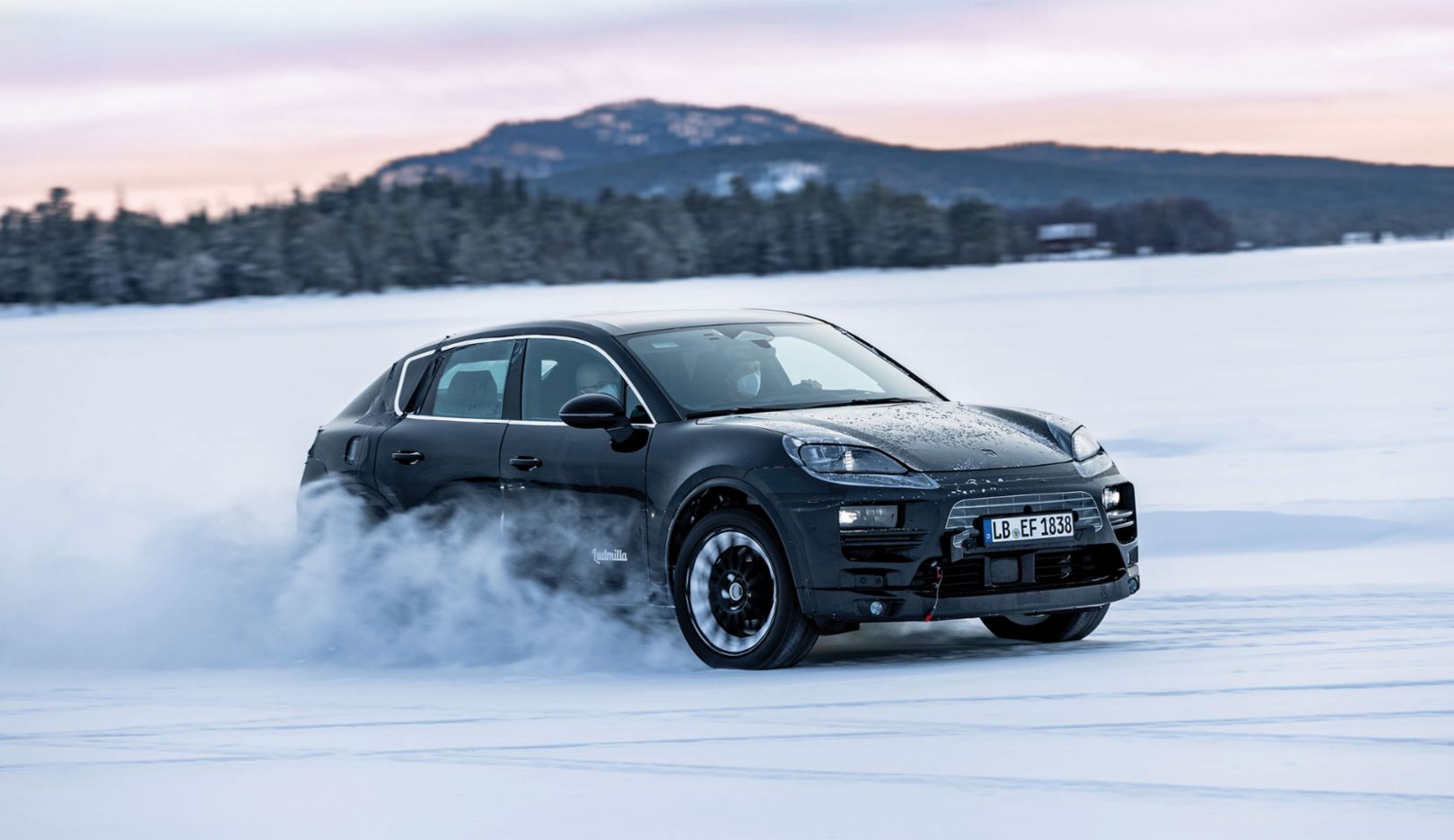
E-motion:
In addition to driving dynamics, the testing focused on the charging process in different countries and temperature regions.One of the new Macan’s greatest strengths is the way in which it accommodates both everyday comfort and sports car performance. A major part is played here by the chassis, in particular thanks to the electronic Porsche Active Suspension Management (PASM). This features as standard in vehicles with air suspension and is optional for vehicles with steel spring suspension. The system responds to the road surface as well as to the driving speed, longitudinal and lateral acceleration, accelerator activation, steering behavior, and vehicle height.
PASM features new dampers with two-valve technology that allows the rebound and compression stages to be changed separately. The vehicle can consequently be switched between performance and comfort in a flash. This versatility makes the differences between the Normal, Sport, Sport Plus, and Offroad driving modes even more evident. In addition, every driving mode is assigned its own height in the new Macan in conjunction with the air suspension. Depending on the speed, the body can be lowered, thereby reducing drag and increasing the vehicle’s range.
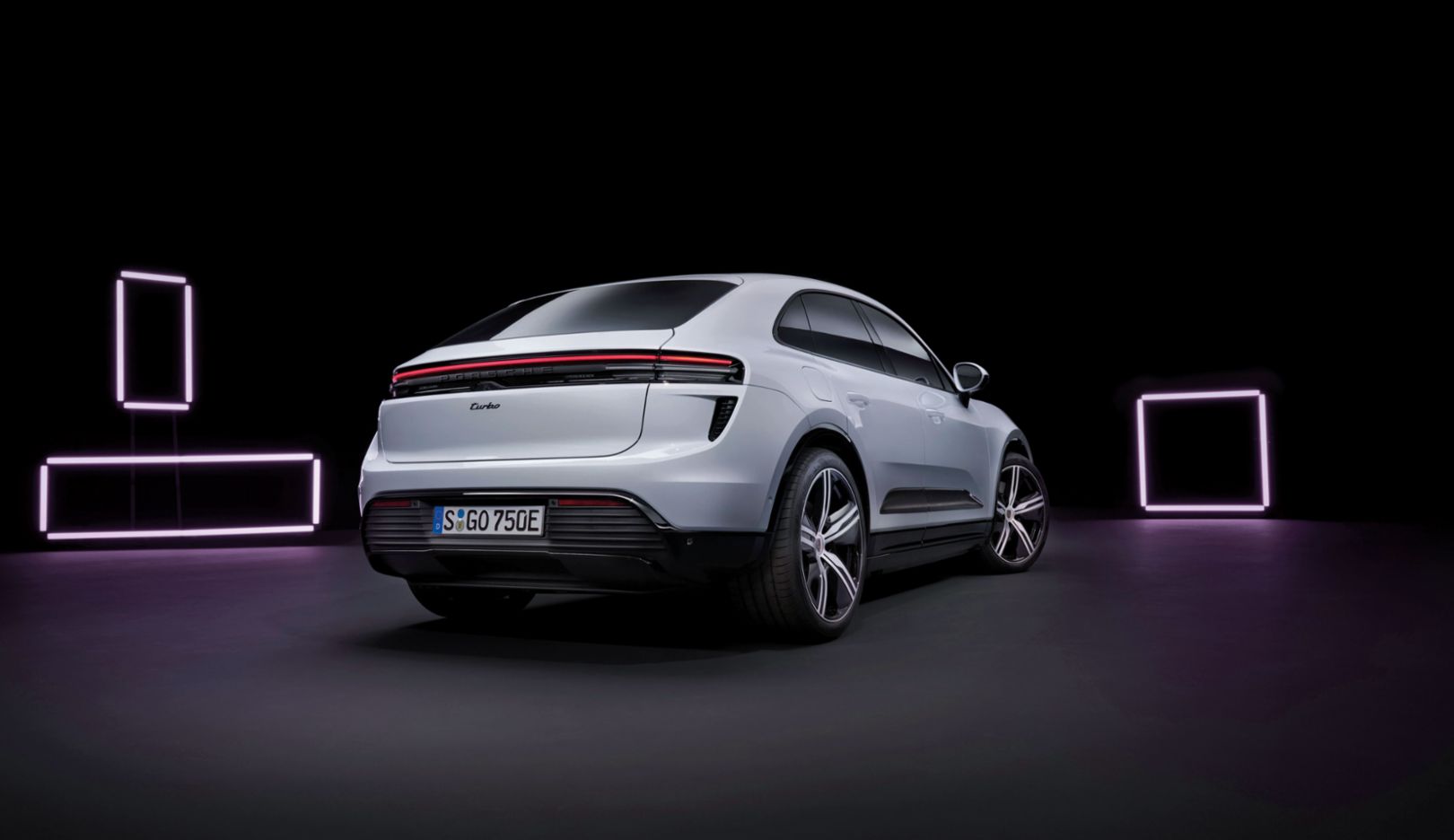
Greater potential range thanks to optimized aerodynamics
Efficiency is another of the all-electric SUV’s specialties. “The cooperation between the designers and aerodynamics experts was extremely constructive,” reports Kerner. “We worked on every inch together to strike the perfect balance between aesthetics and functionality,” confirms Peter Varga, Director Exterior Design at Style Porsche. The developers systematically used the design-related advantages of the all-electric drive to optimize the aerodynamics and therefore also the range. For example, the new Macan’s vehicle floor is fully enclosed – a feature otherwise primarily seen in motorsport. “This wouldn’t be possible in street vehicles with a combustion engine,” explains Kerner, “not least due to the exhaust system.” The wheels are largely enclosed for streamlining, and even the tire contours have been aerodynamically optimized. Adaptive aerodynamic elements likewise make a noticeable contribution to optimizing the range.
For example, the cooling for the front brakes was moved to the air intakes at the front of the car, with flaps that open and close automatically depending on the driving mode. At the tail, a sloping roofline in conjunction with the automatically extending rear spoiler creates the most aerodynamically favorable shape.
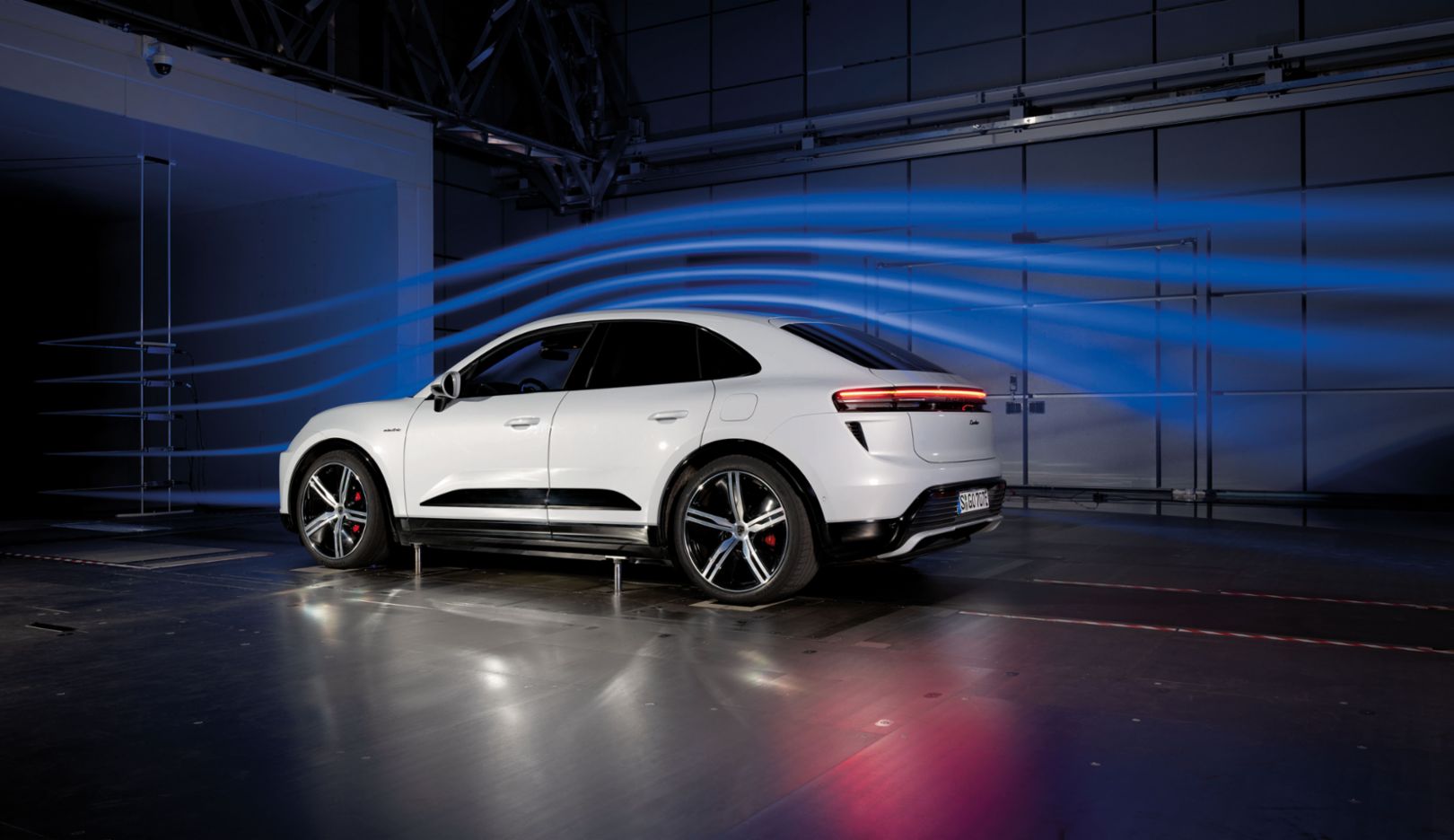
Efficiency:
Optimized down to the last detail, the aerodynamics and their active elements play a key part in improving the range.According to the developers, the rear spoiler increases the downforce when extended to the Performance position, while the Macan achieves top aerodynamics when cruising down country roads. The rear spoiler then moves into the Eco position; the front air flaps are closed; and the chassis is lowered. The aerodynamics experts calculated a drag coefficient of 0.25 for this situation. This represents a one-tenth improvement on the previous figure – quite a leap in the area of aerodynamics. This makes the new Macan one of the most streamlined SUVs in the market – with positive impacts on efficiency.
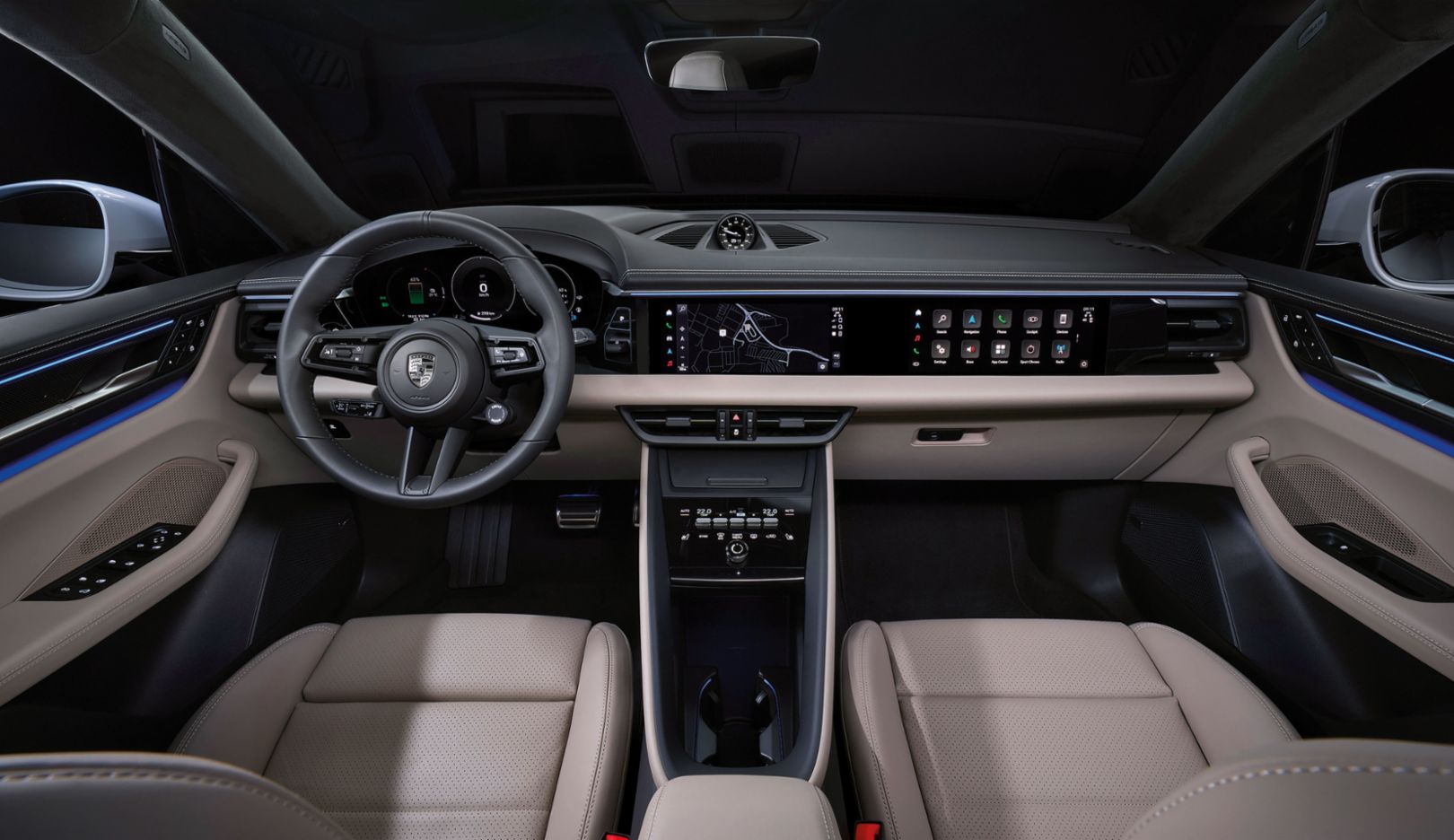
Ergonomics:
With its rising shape, the center console in the newly designed interior emphasizes the impression of sitting low and sporty in the vehicle.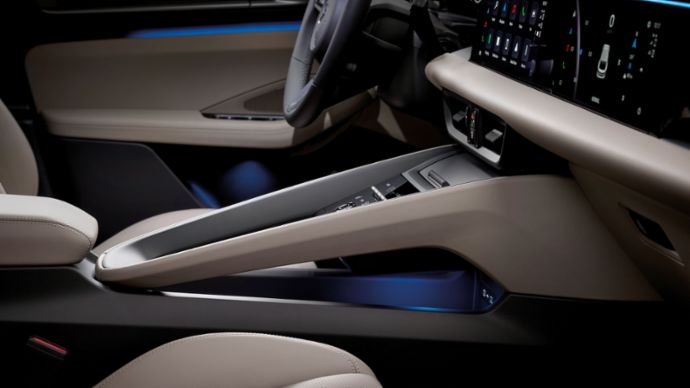
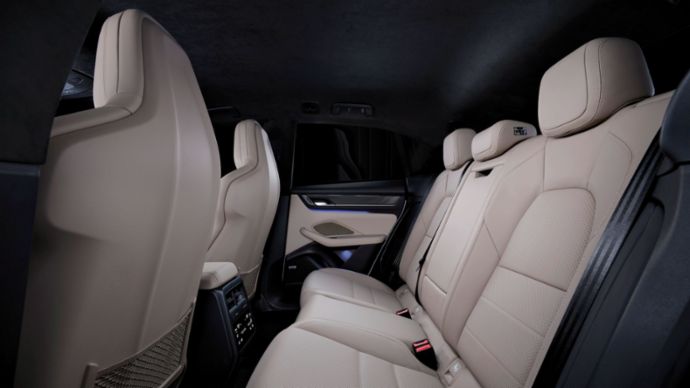
Augmented reality coming to the fore
In addition to real-world prototype testing, simulations in the virtual world and in the wind tunnel are becoming more and more precise and therefore also increasingly important when it comes to making such leaps. We asked Jörg Kerner whether there had been any surprises during the development stage in spite of all the calculations made or whether there was anything he didn’t foresee. The Vice President Product Line Macan thought about this briefly before responding: “The head-up display with augmented reality technology surprised me. Here, for example, the navigation arrows appear on the road directly in the correct turning lane.” He was initially “somewhat skeptical,” Kerner relates, but he now “can’t envisage any other head-up display.”
And there is still “no surprise” that delights him more than how well the driving performance of a sports car has been combined with the comfort of an SUV. Kerner: “That’s why I still love every single kilometer I get to drive in the new Macan.”
Spectacular test-drives
The video about the tests will soon be available in 9:11 Magazine.
Consumption data
Macan 4 Electric
Macan Turbo Electric
-
20.7 – 18.4 kWh/100 km
-
0 g/km
-
A Class

